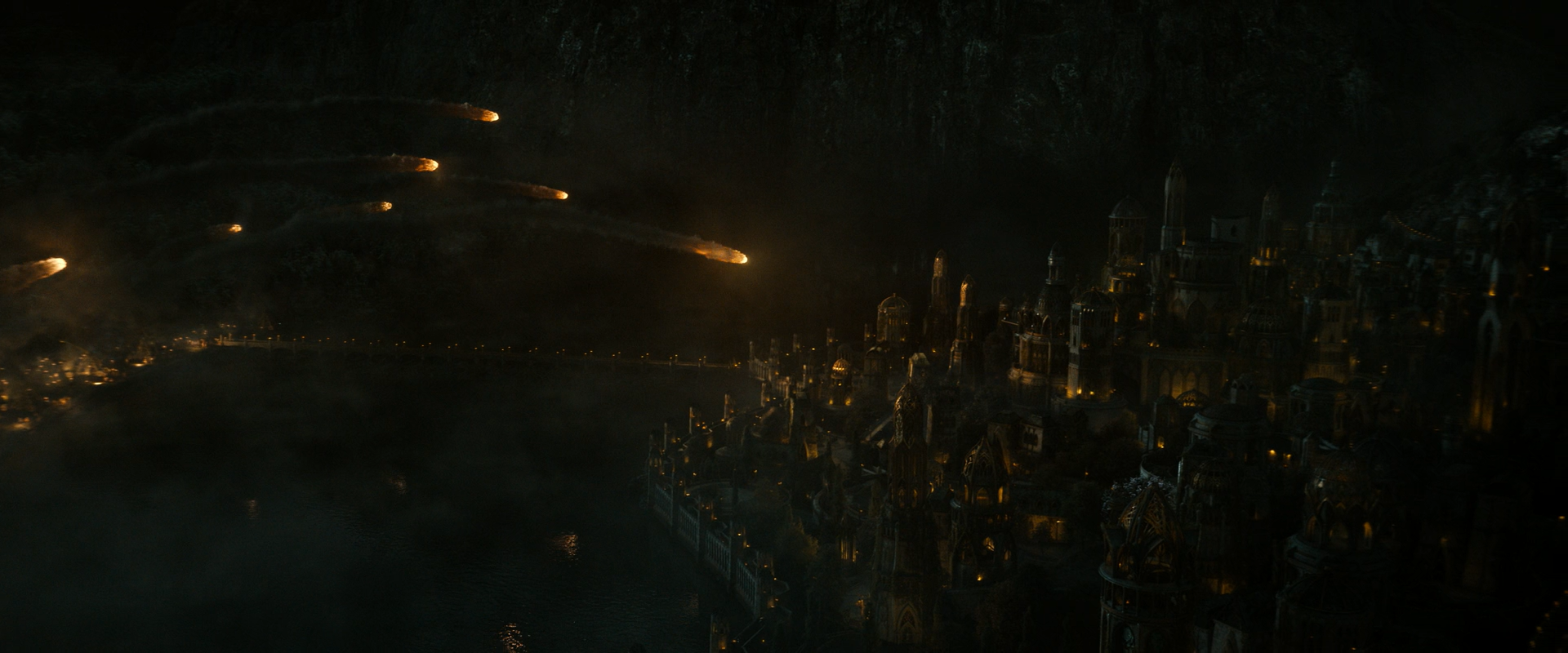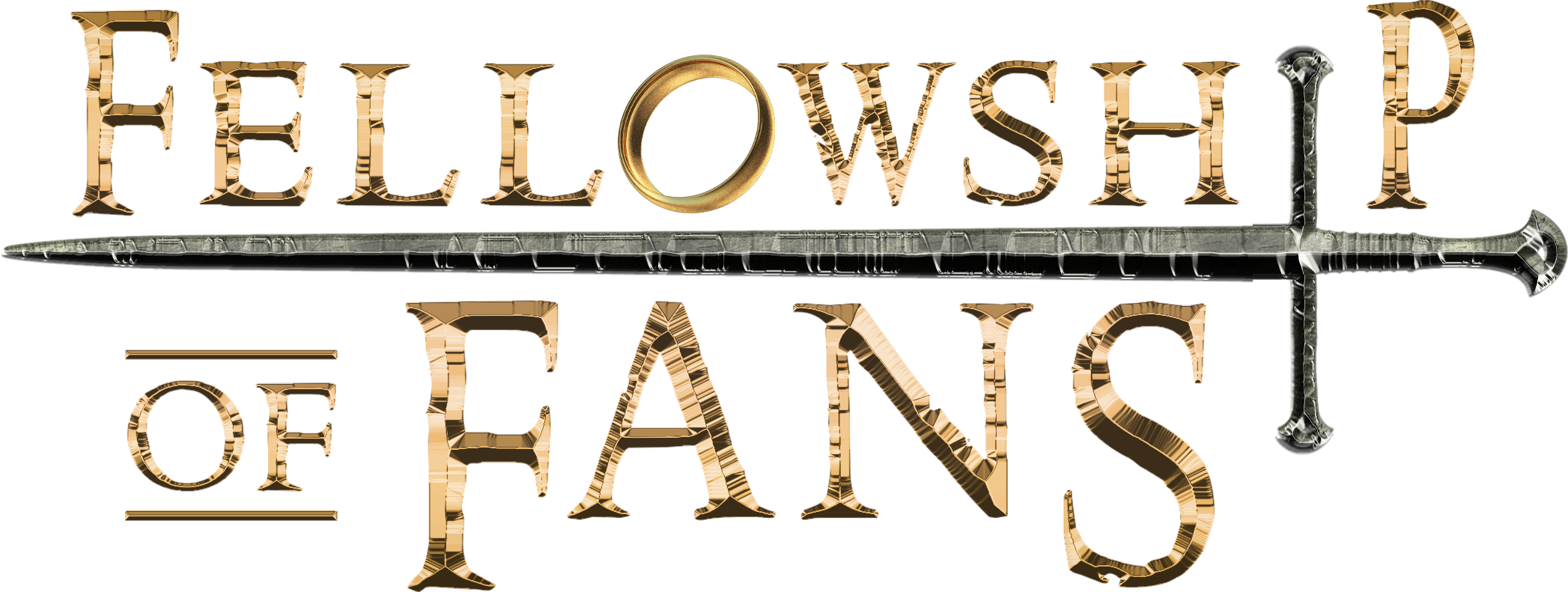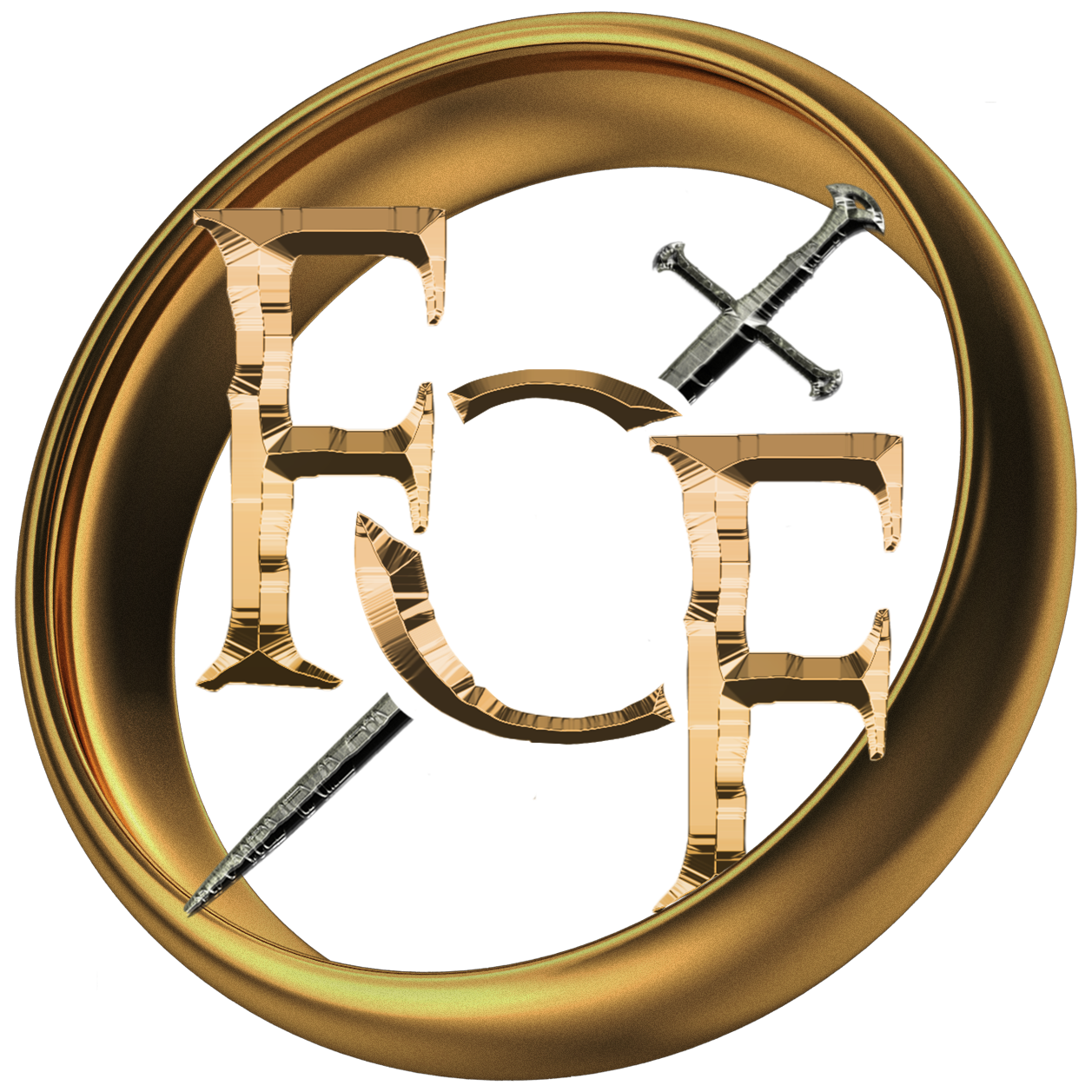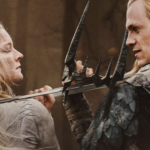
Some Say There Is No Canon: Another Look at Canon and the Tolkien Estate
“Some say that he is a bear descended from the great and ancient bears of the mountains that lived there before the giants came. Others say that he is a man descended from the first men who lived before Smaug or the other dragons came into this part of the world, and before the goblins came into the hills out of the North. I cannot say, though I fancy the last is the true tale.” —The Hobbit, “Queer Lodgings”
Recently there has been an online furor over a statement made by Dr. Corey Olsen (the “Tolkien Professor”) that “there’s no such thing really as canon in Tolkien”. Many people have expressed disbelief that someone claiming to be an expert on Tolkien would say something so obviously wrong. As one who has written on that very subject before—indeed, nearly two and a half years ago—I do feel somewhat qualified to weigh in on the matter. More importantly, however, I wish to take the opportunity of this recent controversy to update and correct my earlier article with newer information that many people may not be aware of—information that I believe should be given consideration in this debate.
Some Say There Is No Canon
For my part, I was completely unsurprised by Dr. Olsen’s remark. I might have worded it differently, but I reached a similar conclusion while researching my article, posted five months before the release of Season One of The Rings of Power. This is by no means an uncommon opinion among Tolkien scholars, specialists, and fans. Perhaps one of the most vocal writers on the subject has been another fairly well-known Tolkien scholar, Michael Martinez. I do not always agree with Martinez’s conclusions (or more to the point, with the way he states them), but I have found his comments on Tolkienian canon quite apposite. Here is what Martinez says about “canon” in his article, “A Funny Thing Happened on the Way to the Canon”:
Inevitably, any serious discussion about Tolkien leads to the question of what is acceptable. That is, what is the “canon” we must rely upon to form a common reference? There is no answer to that question. There never has been, and I don’t believe there ever will be. We have a plenitude of canons to choose from. We can fire a battery of canonical postulations at each other in debate after debate and keep our heads spinning.
I have three comments on this statement: 1) It is quite close in meaning to Dr. Olsen’s recent statement; 2) It was made by Michael Martinez, who is not Dr. Olsen, the two of whom undoubtedly disagree in many other matters regarding Tolkien; and 3) It seems to have been originally made in 2012, if not in 2001, some years before the Tolkien Estate started shopping around the television rights to an adaptation of Tolkien’s works. Martinez typically publishes on his own website, but in May of 2017 he made a blog post on the Tolkien Society website, titled “Yes, but is it canon?”, which made many of the same points:
Canon is the soft underbelly of every interpretation, every scholarly paper, every thoughtful essay. There is no canon, and there are a thousand canons. Every idea put forward, either in jest or speculation, becomes canon for some. Only recently someone sent me a message, taking me to task for not declaring definitively that Gandalf ordered the Fellowship to ride the Eagles to Mordor.
Kristine Larsen, an astronomer and Tolkien scholar who is no great fan of the Amazon series, published an article in 2022 with the title, “Nailing Jell-O to the Wall: Canonicity in Middle-earth”. Her conclusion:
Ultimately, each fan needs to decide for themselves what defines their personal Tolkien canon, and how wedded they are to it, especially as applied to any adaptation (including the Jackson films). … If we can’t agree on what defines Tolkien canon, we certainly can’t agree on what defines a broken canon.
At this point it should be apparent to the non-obtuse that the idea that there is no Tolkien canon (or that there is a multitude of Tolkien canons, which is functionally the same idea) is not an argument originally created in support of Prime Video’s series The Lord of the Rings: The Rings of Power. It crops up whenever there are discussions of Tolkien’s canon, which seem to come in cycles coinciding with popular Tolkien adaptations. It may not be the only idea out there, but it has been around for some time (possibly as long as the idea that there is a Tolkien canon) and has accrued some degree of respectability over time, if the Tolkien Society is willing to entertain it on its blog, and if the Tolkien Gateway is willing to reference it in its article on canon.
Others Say There Is A Canon
Given that many people’s immediate response to Dr. Olsen’s comments was that he was clearly wrong, one might expect it would be a simple matter to find a well-reasoned exposition of the opposing viewpoint: that is, that there is a clear Tolkien canon, and what it consists of. One of the best essays I have found arguing in favor of a Tolkien canon is “The Canonical Middle-earth” by Steuard Jensen. It is not quite a counter to Dr. Olsen’s statement however, because Jensen argues that a Tolkien canon can and should exist, not that it obviously does. Indeed, in his essay he notes various obstacles to developing an agreed-upon canon of Middle-earth.
Perhaps the most prominent response countering Dr. Olsen has been that of Erik Kain, a Senior Contributor to Forbes.com. Kain notes one definition of “canon” that is indeed popular among Tolkien fans: everything J.R.R. Tolkien published regarding Middle-earth in his lifetime. Kain calls this “hard canon”, using the term “soft canon” to refer to all of Tolkien’s unfinished works, notes, and essays that were published posthumously, though he argues that The Silmarillion is close to “hard canon” in comparison to his notes and essays:
One way to understand canon when it comes to Tolkien is to separate the works he published prior to his death from his posthumous writings. The Hobbit and The Lord Of The Rings are considered “hard canon” by the wider Tolkien community. The rest is considered “soft canon”.
Note that, according to Kain, this is the definition of what is considered canon “by the wider Tolkien community”. Martinez, on the other hand, asserted that every idea becomes canon for some. At this point, perhaps it is worth looking more carefully at what a “canon” is, and who exactly gets to decide what belongs in it. Otherwise, we risk arguing heatedly over whether an elephant is large and bulky or long and sinuous. My previous article on the matter of canon was actually about just this matter; however, I believe there is more to be said on the matter, and perhaps I (and many others who have been arguing this matter) have been blinded by my familiarity with the Star Wars and Star Trek fandoms, and the use of the word “canon” within those fandoms.
Who Forges the Canon?
The Arthurian Cycle, the Robin Hood legends, the Volsung-Niflung Cycle, and many other stories predate the establishment of copyright law. Whatever their historical basis may have been, or whether they were originally regarded as mostly fictional stories set against a background in the known world (as Tolkien argued was the case with Beowulf), is uncertain. Their original authors are unknown. The stories were told and retold, with each new storyteller adding new elements while also omitting some elements included by previous storytellers. For such stories there is no canon. There may be highly influential versions, such as Thomas Malory’s Morte d’Arthur or T.H. White’s The Once and Future King for the Arthurian Cycle, or Richard Wagner’s Der Ring des Nibelungen for the Volsung-Niflung Cycle, but there is no version that is canonical. That is not to say, however, that audiences have no expectations when viewing such adaptations. Audiences of a Robin Hood adaptation may be sorely disappointed if the reigning King of England is not Richard I, or at least his brother John. Never mind that in the earliest Robin Hood stories no king is mentioned by name, and the earliest king who is mentioned by name is one Edward. Nevertheless, due largely to the influence of Sir Walter Scott’s Ivanhoe, it may now be culturally and financially inadvisable to separate Robin Hood from King Richard and Prince John.
What is generally regarded as the first copyright law was the Statute of Anne, passed in 1710 in England. The use of the term “canon” in somewhat the same sense used here came over two hundred years later. In the early 20th century the stories of Sir Arthur Conan Doyle featuring Sherlock Holmes were popular, and inspired a type of fiction which was known as a “pastiche”, but which today would be known as “fan fiction”. Due to the multiplication of Sherlock Holmes stories, fans of the series created a list of works—four novels and 56 short stories—that were indisputably written by Sir Arthur Conan Doyle himself and published with his consent. This list was half-jokingly dubbed “the Canon” by Ronald Knox, a Catholic priest and author who enjoyed reading (and writing) detective stories, among other literature.
The latter half of the 20th century saw the emergence of television and film franchises such as Star Trek and Star Wars, and the term “canon” was applied to some works in those franchises. Both franchises were based on productions resulting from the efforts of multiple people, not just a single author. In both cases the canon was defined by people working on behalf of the rights holders (CBS/Paramount for Star Trek, and Lucasfilm/Disney for Star Wars), rather than by a group of fans. The Star Trek canon consists primarily of television episodes, as well as some feature films. It excludes other licensed works, such as novels and reference books. The Star Wars canon is confined to feature films. At one time, before the sale of Lucasfilm to Disney, Star Wars had a tiered canon that covered novels and other non-film works as examples of a lower tier of canon, but now the Star Wars canon is fairly binary. In both cases an important purpose of the “canon” is to define a continuity that should be respected by writers and others who are adding new entries, whether films or television episodes, to the canon.
The word “canon”, then, when applied to groups of related books, films, television episodes, or whatever, has various shades of meaning. It could be created by some subset of fans, or it could be declared by the same entity that holds the copyright. It could apply only to films, television episodes, novels, or whatever, and exclude novels, films, television episodes, or whatever. It could be fixed or continually added to. The term could be used facetiously, or it could be deadly serious. And it could represent a mere corpus of works, or it could attempt to establish a continuity that is consistent within itself.
Before moving on, I’d like to make a point regarding adaptations. As a general rule, for any set of works originally created in one medium, any adaptation of those works into a different medium is not considered “canon”. Thus, neither the films directed by Peter Jackson, nor the television series run by Patrick McKay and J.D. Payne are “canon”. They may make use of Tolkien’s writings, but nothing they add—including the various visual designs—would be considered part of a Tolkien canon. They may be part of their own continuities, which we could call “movie canon”, “show canon”, etc., but they are not Tolkien canon.
So, who determines what is the Tolkien “canon”? In my previous article on the subject, based on my experience with the Star Trek and Star Wars fandoms, I assumed that would have to be the Tolkien Estate. However, I also stated that the Tolkien Estate had not seen fit to determine an official canon. Thus the situation is more like the Sherlock Holmes fandom, where fans of the works themselves establish the canon, though there is not nearly as broad of a consensus, especially since so much of what we have of Tolkien’s legendarium was published posthumously, most of it still in an unfinished state. In fact, however, the Tolkien Estate has spoken out on the matter of canon since my previous article was written, although it’s possible they had spoken out before, and I simply missed that fact.
What the Tolkien Estate Says
On April 14, 2023, Demetrious Polychron sued the Tolkien Estate, Amazon Studios, and various related entities and individuals, claiming that The Rings of Power violated his copyright. Polychron had written a fan fiction sequel to The Lord of the Rings, titled The Fellowship of the King, and offered it for sale online. The Tolkien Estate was unhappy with his actions, and after the two parties failed to achieve a satisfactory resolution, Polychron apparently decided that the best defense was a good offense and sued the Tolkien Estate before they sued him.
The suit was dismissed on August 14 of the same year. The principal argument for the dismissal was that, as Polychron’s work infringed on the Tolkien Estate’s copyright, he could not use it as grounds for a copyright suit against them. The court did also briefly consider and dismiss the case on the merit of its claims as well, but it did not go into a claim-by-claim analysis. That is something I would have liked to have seen, but I suppose my loss is the California taxpayers’ (meager) gain. However, I did get something else out of the lawsuit, and that is a statement by representatives of the Tolkien Estate on what they consider to be “Tolkien Canon”. Of course, an argument made in court may be an argument of convenience, and there is probably nothing stopping the Tolkien Estate from changing their definition depending on the circumstance. Nevertheless, I think it is worth considering, at least provisionally, as a public statement by the Tolkien Estate on how they define the canon. Also, I believe it is a reflection of the evolution of Christopher Tolkien’s thoughts on the matter.
On July 27, 2023, the Tolkien Estate’s legal team filed a motion to dismiss Polychron’s case. The relevant portion (from Section II: BACKGROUND) is as follows:
J.R.R. Tolkien’s The Lord of the Rings is widely regarded as one of the greatest works of literary fantasy ever written. Often called a trilogy, it is in fact a single novel comprised of three books: The Fellowship of the Ring and The Two Towers (1954), and The Return of the King (1955) (collectively, “TLOTR“). TLOTR is a sequel to The Hobbit, and together with the posthumously published The Silmarillion, Unfinished Tales and other works, make up the Tolkien “Legendarium” set in the fictional “Middle-earth” (collectively, the “Tolkien Canon”). The Tolkien Canon includes extensive notes and drafts by Tolkien on characters and events, many later published in the 12-volume The History of Middle-Earth.
Wait, what?
If I understand this correctly, the Tolkien Estate’s definition of “Tolkien Canon” includes not only Unfinished Tales of Númenor and Middle-earth, but also The History of Middle-earth. It is not just published works, but notes and even early drafts later superseded. It is the entire Tolkien “Legendarium”, including anything Tolkien wrote concerning the world of Arda that still remains unpublished. This is a definition of “canon” that is far more expansive than the typical fan definitions, though one sometimes finds Tolkien fans who advocate for it. It is more like the type of “canon” established by Sherlock Holmes fans than that defined by Lucasfilm/Disney or CBS/Paramount. It is a corpus rather than a continuity.
What is this type of canon good for, however? What does it tell us about Gil-galad’s parentage, for example? “Some say that Gil-galad was the son of Fingon, but others say he was the son of Orodreth, who was the son of Angrod. Some even say he was a descendant of Fëanor” I am reminded of the exchange between Julian Bashir and Elim Garak in “The Wire“, an episode of Star Trek: Deep Space Nine:
BASHIR: … You know, I still have a lot of questions to ask you about your past.
GARAK: I’ve given you all the answers I’m capable of.
BASHIR: You gave me answers, all right, but they were all different. What I want to know is of all the stories you told me, which ones were true and which ones weren’t?
GARAK: My dear Doctor, they’re all true.
BASHIR: Even the lies?
GARAK: Especially the lies.
Of course, J.R.R. Tolkien was not exactly Elim Garak, but he was, among other things, a scholar of ancient and medieval history. So he was quite familiar with fragmentary and conflicting historical narratives. In his essay “On Fairy Stories” he famously argued in favor of an internal consistency, even for fantasy stories, in order to preserve the suspension of disbelief. On the other hand, he always tried to fit his stories into some kind of historical frame narrative, even considering the possibility that the events of The Silmarillion were just half-understood myths and legends told by the Númenóreans rather than objective truth within his Secondary World. Clearly he felt that the idea of an omniscient narrator of his supposedly historical stories also worked against the suspension of disbelief. Even when Tolkien made changes or “retcons” to his Legendarium, he sometimes couldn’t bear to cast aside the previous versions, and merely piled one version on top of another with a “Some say that …, but others say that ….”
Unfortunately, J.R.R. Tolkien was never able to publish The Silmarillion in his lifetime, and one can only speculate what his published version would have looked like (the “ideal canon”, one might say). He left to his son Christopher the task to cobble together a Silmarillion from his various versions. Christopher Tolkien tried to put together a book that was coherent and consistent. He published The Silmarillion a mere four years after his father’s death, but even before its publication he had reservations about it, as he notes in his Foreword:
“A complete consistency (either within the compass of The Silmarillion itself or between The Silmarillion and other published writings of my father’s) is not to be looked for, and could only be achieved, if at all, at heavy and needless cost.”
Nevertheless, Christopher’s goal with The Silmarillion had been to put together a single coherent narrative. When he published Unfinished Tales, this remained his goal to some extent. In the chapter “Aldarion and Erendis: The Mariner’s Wife”, he even changed Gil-galad’s birth name from Finellach to Ereinion in order to be consistent with the name he had used in The Silmarillion. For the chapter “The History of Galadriel and Celeborn”, on the other hand, Christopher noted that finding consistency between his father’s various versions was impossible, and he simply included several different texts with notes. This is the approach he later followed with the 12 volumes of The History of Middle-earth, laying out his father’s various drafts, notes, and essays, with commentary of his own, so that aficionados of Tolkien’s works could appreciate the full breadth of his Legendarium. It seems to me that the Tolkien Estate’s definition of the “Tolkien Canon” noted above is very much in this tradition.
Adaptations and the Tolkien Canon
What does the definition of the “Tolkien Canon” mean for adaptations of Tolkien’s works, though? First of all, as noted above, and also as is clear from the Tolkien Estate’s definition of the “Tolkien Canon”, adaptations are excluded from the canon. They do not add to the canon, as a new Star Trek episode, or a new (Skywalker Saga) Star Wars film would, but are merely derivative works of the canon, which is mostly, if not entirely, in written form. (I am not certain where the Tolkien Estate stands on the illustrations of J.R.R. Tolkien, but most fans regard them as merely suggestions for how to picture the written words.) So, in that sense, arguing about whether a new Tolkien adaptation is “canonical” makes no more sense than arguing whether a particular King Arthur film or Robin Hood television series is “canonical”.
There is also, of course, the issue of whether an adaptation is consistent with the canon, which is perhaps what some people mean when they use the term “canonical”. This may possibly be a concern for Star Trek and Star Wars fans, but Tolkien fans should be aware that for them, at least, it is a forlorn hope. If the Tolkien Canon is not consistent with itself, how can any adaptation be consistent with it? It’s one thing to create a new adaptation of The Hobbit or The Lord of the Rings (which for some reason seems to be an unpopular idea still), but to create an adaptation of the Second Age, or the First Age—assuming the rights were available—would necessitate picking and choosing which of the various versions of the story to go along with. As I interpret the “Tolkien Canon”, it is conceivable that we could see two different Tolkien adaptations with the approval of the Tolkien Estate, one in which the Blue Wizards arrive in Middle-earth in the Second Age, and the other in which they first arrive in the Third Age. Both decisions would be justified by the “Tolkien Canon”. As I understand it, the Tolkien Estate is not particularly interested in resolving such conflicting details; rather, they are choices to be made by those producing the adaptation.
Finally, there is the matter of how closely an adaptation follows any version of the Tolkien Canon. A decision by producers of a Tolkien adaptation to include dancing bears in Númenor may not be advisable, but it is at least justified by The Nature of Middle-earth (along with silver-haired—and only silver-haired—Gil-galad), which I presume is now also part of the Tolkien Canon—at least, those parts written by Tolkien himself. On the other hand, a decision to give Isildur a named wife, or Helm Hammerhand a named daughter, for example, goes beyond the canon, but would seem to be justifiable from it. For an adaptation of any of Tolkien’s works, with the possible exceptions of The Hobbit, The Lord of the Rings, and perhaps The Children of Húrin, details, characters, dialog, and even whole story lines may need to be added to fill in the gaps left by Tolkien. Certainly this is the case with recent and forthcoming adaptations such as The Rings of Power, The War of the Rohirrim, and The Hunt for Gollum (or whatever its final title will be).
Some additions, however, not only build on the Tolkien Canon, but revise what is already there. In the New Line adaptation of The Lord of the Rings, for example, the Argonath are not the brothers Isildur and Anárion, but Elendil and Isildur instead. Arwen brings Frodo to Rivendell, rather than Glorfindel. Faramir decides to take Frodo and Sam to Minas Tirith, and a Nazgûl discovers that Frodo is the one who has the Ring, something that never happens in the book and potentially jeopardizes the entire quest. In the Extended Editions, Legolas refers to Isildur as “the last king of Gondor”. (Eärnur, who was king of Gondor, disappeared in Minas Morgul 2048 years after Isildur’s death.) And so on. In Prime Video’s The Rings of Power, Galadriel is the “Commander of the Northern Armies” in the Second Age. She is presumed a widow, her husband Celeborn having gone missing in war, and their daughter Celebrían (and son Amroth, in some versions), presumably not yet born. Eregion was founded far from Lindon and next door to Khazad-dûm for no discernible reason, mithril being discovered and then kept an industrial secret until shortly before Eregion’s destruction. The fabled period of friendship between the Elves and the Dwarves (apart from the non-canonical friendship of Elrond and Durin IV) is confined to that same brief period, and the Doors of Durin, symbolic of that friendship, are installed even as Orcs surround the Elven city.
Changes to the source material of an adaptation are nothing new. They have been around as long as Hollywood has been adapting novels and other stories. Indeed, they have been around even longer. I recall my own horrified reaction to reading a stage adaptation of The Woman in White (published as a novel in 1860) by Wilkie Collins, the author himself. One might argue that the author of a work has the absolute right to make any changes for an adaptation, whether that author is Wilkie Collins, or more felicitously, William Goldman (author of The Princess Bride, published in 1973). That is true, of course, but from a legal standpoint, anyone who is adapting a work under license has that same right. If I had the television rights to the story of “Aldarion and Erendis”, I could make a version of the story with spaceships—assuming I wanted to do such a thing—as long as it was not forbidden by the license agreement.
Of course, just because something is legal does not mean it is advisable. Fans of Tolkien may wish to see characters, places, and scenes they’ve hitherto only imagined shown on screen, perhaps in the company of their friends and family who may not already be fans. Those who are not already fans may wish to check out an adaptation just to see what this Tolkien thing is all about. Neither group is well served by an adaptation that is unrecognizable as the thing that is being adapted, although whether a particular adaption is deemed “unrecognizable” will vary from one fan to another.
Although those making the creative decisions may wish to tell a story that speaks to themselves, and also to surprise even fans who know the books well, in the case of Tolkien, at least, they would do well to first consider leveraging the great amount of thought he put into his stories. This is true especially if they have any expectation of creating any sequels, prequels, or spin-offs, because although the Tolkien Canon is not consistent, Tolkien did have an incomparably holistic knowledge of his Legendarium, and the closer those producing an adaptation hew to Tolkien’s thoughts in one adaptation, the more they can leverage his thoughts when adapting a different, but related story. And perhaps the fewer continuity errors they would make as well.
Ultimately, however, the producers of any adaptation are responsible for pleasing audiences, and considerations of canon must be weighed against that goal. As Dr. Olsen likes to say, every choice made in an adaption comes with both costs and benefits. The trick is to make choices where the benefits outweigh the costs. The scriptwriters for the New Line films decided to invent a moment of reconciliation between Boromir and Aragorn at the end of The Lord of the Rings: The Fellowship of the Ring. It may not have been Tolkien canon, but audiences overall enjoyed it, so only a few canon sticklers grumbled. Also, regarding continuity, an adaptation’s primary need is to be consistent with itself, since it is not extending the canon’s continutity, but rather creating its own continuity. For this reason, it would have made less sense for the Stranger in The Rings of Power to be one of the “other two” Wizards than to be Gandalf, even if the choice of Gandalf is less justified by the canon. Of course, including Gandalf at all in the story was a deliberate choice, but whether or not it was a good choice depends more on how his character develops over the next three seasons, and less on whether it was jusfied by the canon.
I hope that anyone who has read this far has a better understanding of what “canon” can mean in the context of Tolkien’s Legendarium, and the various thorny issues that lead to disagreements among Tolkien fans about what the canon consists of, and what is justified by it. I am under no illusions that the Tolkien canon debate will suddenly calm down after the publication of this article, but I do hope that those who choose to participate in such debates will have a better awareness of the issues surrounding agreement upon a definition of a Tolkien canon. I also hope that more people will be aware of what the Tolkien Estate has said on the matter of the Tolkien Canon. In the end, though, debates about Tolkien’s canon are often less about what Tolkien wrote himself, and more about fans’ differing head canons, which is probably why they can be particularly fierce. No adaptation’s writing team or production crew can hope to match the collective caliber of our head canons.
Note: Dr. Olsen has recently released a 12-minute video explaining his reasoning behind his controversial 5-second soundbite. This article was nearly complete before the video was released, but nothing in the video required me to modify what I had already written. Although I don’t necessarily agree with Dr. Olsen on all points, I anticipated many of the points he would make, being familiar with them myself. In fact, his video nicely dovetails with my article. A crucial point he makes is that the word “canon” implicitly assumes an authority of some sort to declare what is canon or not, which is one of the main points I address in this article. Of course, any authority needs recognition, and whether the Tolkien Estate’s stated definition of canon prevails with Tolkien fans remains to be seen.




No Comments